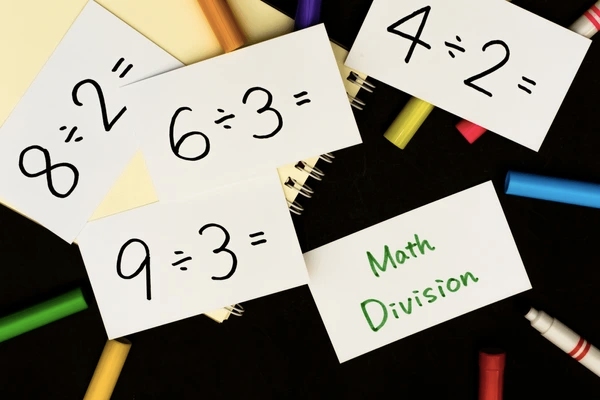Have you ever watched a child struggle with the concept of division, their frustration growing with each attempt? It’s a common scene in classrooms and homes around the world. Division, a fundamental pillar of mathematics, is not just a subject confined to the boundaries of school curriculums but also plays a crucial role in our daily lives. Yet, despite its importance, division can be a source of challenge for many students. This is where math division tricks come into play.
Math & ELA | PreK To Grade 5
Kids see fun.
You see real learning outcomes.
Watch your kids fall in love with math & reading through our scientifically designed curriculum.
Parents, try for free Teachers, use for free
These strategies are designed as shortcuts and tools to deepen understanding and improve problem-solving skills. By presenting division in a more accessible and less intimidating way, we aim to help students tackle division problems with confidence and ease.
Whether you’re a teacher seeking innovative teaching methods or a parent looking to support your child’s educational journey, this guide offers valuable insights and techniques to make division more manageable and enjoyable.
8 Math Division Tricks for Kids
1. The Halving Trick for Even Numbers
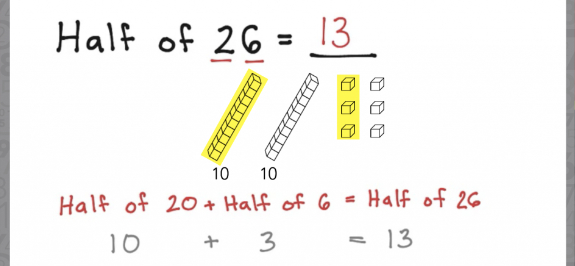
One of the easiest ways to divide is using the halving trick for even numbers. This is especially handy when you’re dividing a number by 2. The concept is simple: if a number is even, you can split it into two equal parts.
Example: If you have 16 apples and want to share them equally between two people, you can use the halving trick. Since 16 is an even number, dividing it by 2 is as simple as finding half of 16, which is 8. So, each person gets 8 apples.
2. Multiplication Facts as Division Shortcuts
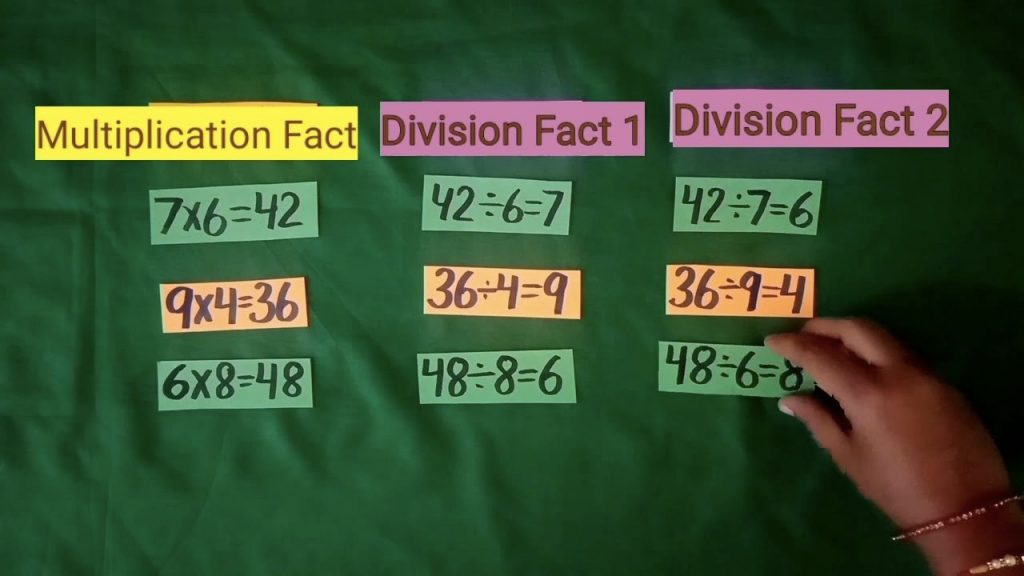
Understanding multiplication is a powerful tool for learning how to divide. This method relies on the idea that division is the inverse of multiplication. If you know your multiplication tables well, you can quickly reverse-engineer them to solve division problems.
Example: Suppose you’re faced with the division problem 63 ÷ 7. If you remember that 7 times 9 equals 63, then you can quickly figure out that 63 divided by 7 is 9. This shows how multiplication facts serve as math division tricks, making division for kids much simpler.
Here are some fun division facts worksheets:
Related Reading: Best Multiplication Tricks for Math Students
3. The ’10s’, ‘100s’, and ‘1000s’ Trick
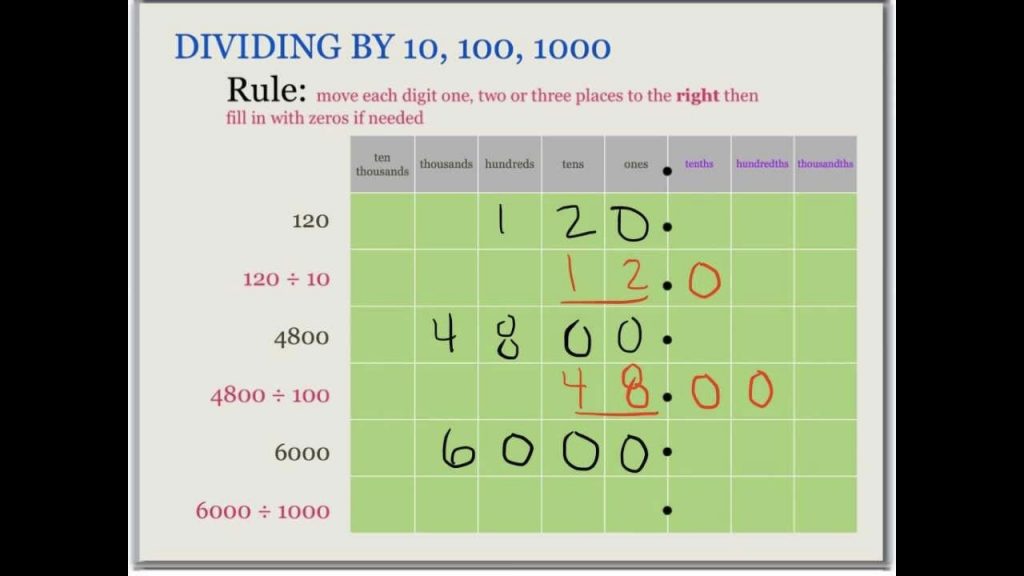
Dividing large numbers by 10, 100, or 1000 can seem daunting, but there’s a straightforward trick: moving the decimal point. This is one of the most practical ways to divide large numbers without getting bogged down in complex calculations.
Example: If you need to divide 1,000 by 100, instead of working through the problem the long way, you can simply move the decimal point two places to the left (since you’re dividing by 100). So, 1,000 becomes 10.00, and when you remove the extra zeros, you’re left with 10. This trick demonstrates the easiest way to divide large numbers, making it a favorite among division math tricks.
4. Chunking Method
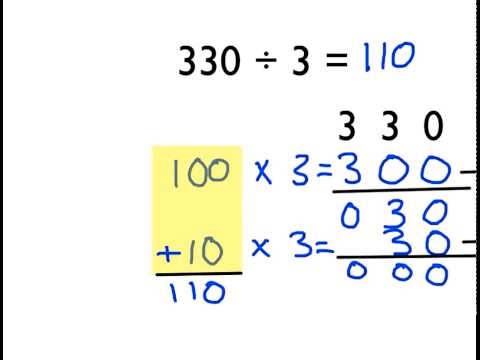
The chunking method is an easy division method that breaks down dividing large numbers into more manageable steps. This method involves subtracting large chunks of multiples of the divisor from the dividend until you reach zero or a remainder smaller than the divisor.
Example: To divide 154 by 7 using the chunking method, start by seeing how many times 7 can fit into 154 in large chunks. You know that 7 times 10 is 70, so you can subtract 70 twice from 154 (140), leaving you with 14. Then, you see that 7 fits into 14 exactly 2 times. Add up all the times you subtracted 7, and you get 22. So, 154 divided by 7 is 22.
5. Skip Counting to Find Quotients
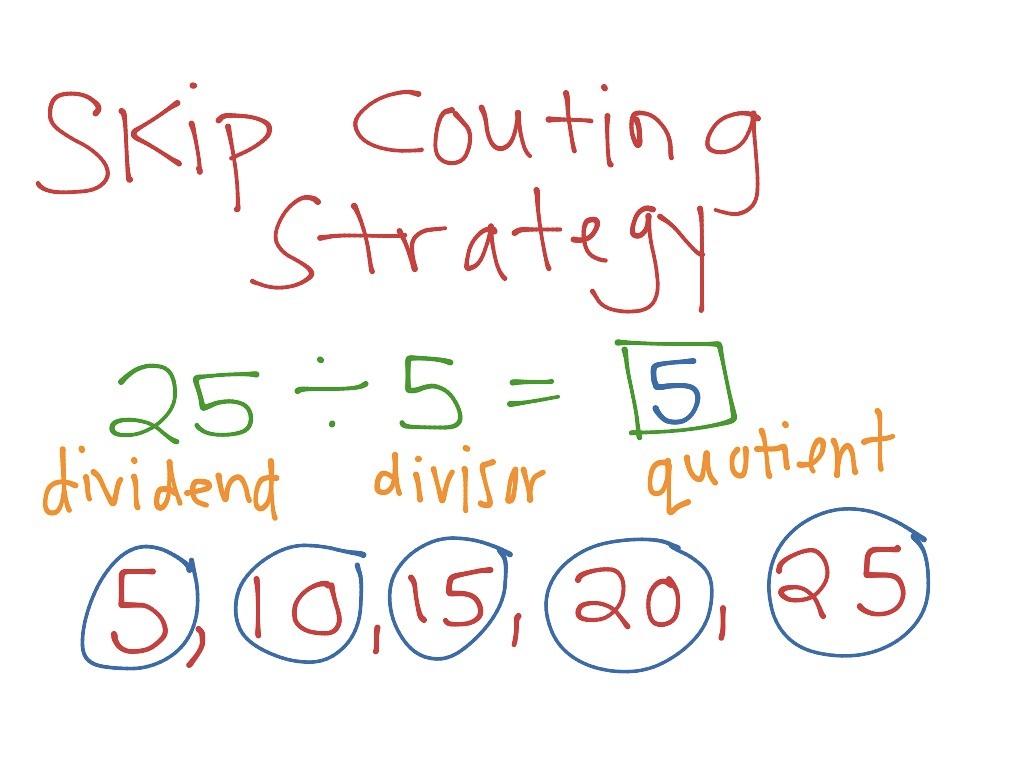
Skip counting is a visual and practical way to solve simple division problems, making it an excellent strategy for kids. It involves counting by the divisor until you reach the dividend. This method is particularly useful for visual learners and can be done with fingers, drawings, or counters.
Example: If you’re trying to divide 24 by 3, you start counting by 3s: 3, 6, 9, 12, 15, 18, 21, 24. Count how many steps you took to reach 24, which in this case is 8. Therefore, 24 divided by 3 equals 8.
6. Reciprocals and Inverse Operations
Understanding reciprocals, and inverse operations are some of the math division tricks that can simplify division, especially as kids start dealing with fractions and more complex numbers. The reciprocal of a number is simply 1 divided by that number, and using it turns division into multiplication, which many students find easier.
Example: If you need to divide 1 by 2 (which is written as 1 ÷ 2), you can multiply 1 by the reciprocal of 2 instead. The reciprocal of 2 is 1/2, so you do 1 × 1/2, which equals 1/2. This approach makes it an easy way to divide, especially when working with fractions, by converting division problems into multiplication ones.
Related Reading: Reciprocal Formula - Definition, Examples, Facts, FAQs
7. Cross-Division Method
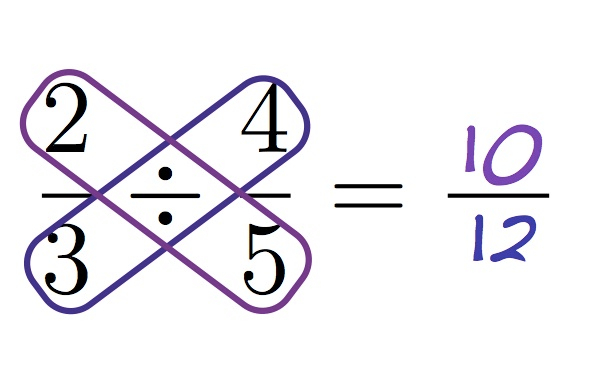
The cross-division method, also known as simplification before division, is a handy trick for reducing larger numbers before dividing. This method is particularly useful when the dividend and divisor share a common factor. By simplifying the numbers first, the division becomes much easier.
Example: Suppose you want to divide 48 by 6. You notice that both numbers are divisible by 6. You can simplify 48 divided by 6 to 8 divided by 1 (since 48 ÷ 6 = 8 and 6 ÷ 6 = 1). Your division problem is significantly simpler: 8 divided by 1, which obviously equals 8. This method is a great math division trick because it reduces the complexity of the problem before you even start the actual division.
Common Challenges Kids Face When Learning Division
Learning division can be tricky for many kids. As they navigate the world of mathematics, they encounter several common challenges that can make understanding how to divide overwhelming. Here’s some of these hurdles:
- Grasping the basic idea behind division math problems can be tough. Kids often struggle with the concept that division essentially shares or groups numbers in equal parts.
- A strong foundation in multiplication is crucial to learn division effectively. Many children find it hard to recall multiplication facts, directly impacting their ability to solve division problems.
- When division for kids moves beyond exact answers, the concept of remainders can be confusing. Understanding what to do with the leftover numbers and how they fit into the context of a problem is a common challenge.
- Applying division to solve word problems adds another layer of difficulty. Kids must first decipher what the question is asking before they can even begin to apply their division skills.
- The process of long division, with its multiple steps, can be particularly daunting. Remembering the order of operations and where to write each number requires practice and patience.
- As division problems increase in complexity, so does the intimidation factor. Kids often feel overwhelmed when faced with dividing large numbers, unsure of how to start.
4 Tips for Practicing Division Tricks
Mastering math division tricks requires practice, patience, and strategies. Here are some tips on incorporating these tricks into daily math practice, making the learning process both effective and fun.
1. Interactive Online Division Games: Online interactive games are designed to make learning division fun and engaging. They often include a variety of math division tricks, allowing kids to practice and apply these strategies in a game-like setting. This approach reinforces learning and keeps children motivated.
Here are some fun division games that you can get started with:
2. Repetition and Consistency: Like any skill, becoming proficient with math division tricks requires regular practice. Dedicate a specific time each day for practicing division. Using worksheets can be particularly effective for this purpose. Worksheets allow for repetitive practice of the same type of problems, helping to cement the division tricks in memory. They can range from simple division problems to more complex ones, gradually increasing in difficulty as proficiency grows.
Get started with these printable division worksheets:
3. Daily Practice with Real-Life Examples: Incorporate math division tricks into everyday situations. Whether dividing snacks among friends or calculating the time each task takes during the day, using real-life examples helps reinforce these concepts in a practical, memorable way.
4. Encourage Self-Correction: Encourage kids to check their work after completing division exercises. This can be done by using multiplication to verify their division answers.
Conclusion
Mastering math division tricks can transform how children approach and solve division problems, making the process more enjoyable and less intimidating. By practicing these tricks regularly and incorporating them into daily learning, kids can build a strong foundation in division, setting them up for success in mathematics.
Related Reading: Best strategies for solving math word problems
Frequently Asked Questions (FAQs)
What is the 4 division trick?
The 4 division trick involves halving a number twice to quickly divide it by 4, making it a simple and effective strategy for division.
How do you divide mentally fast?
To divide mentally fast, use known multiplication facts, round numbers to make calculations simpler, and apply division shortcuts like the halving trick.
Which is harder multiplication or division?
The difficulty between multiplication and division varies by individual; however, many find division harder due to its more complex conceptual understanding and the steps involved in long division.
How do you teach division to struggling students?
Teach division to struggling students by using visual aids, breaking down steps into manageable parts, and practicing with real-life examples to enhance understanding.
What are the 3 rules of division?
The 3 rules of division are: dividing by 1 leaves the number unchanged, dividing a number by itself equals 1, and division by 0 is undefined.

















